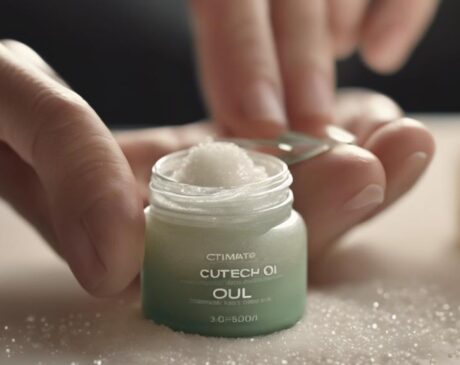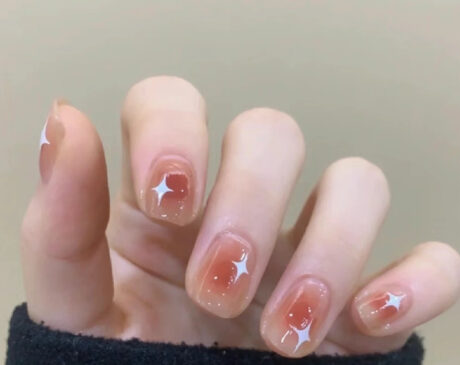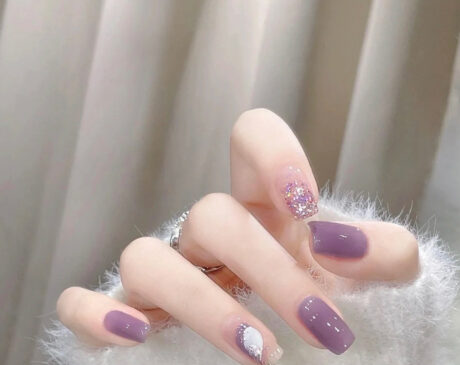Are Dip Nails Bad for You?
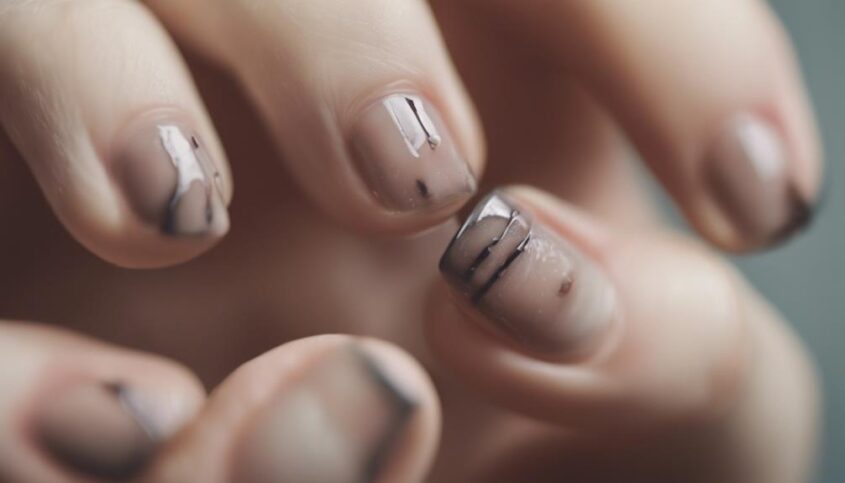
Dip nails can be harmful due to potential health risks like skin irritation and weakened nail beds from chemicals used in the process. Prioritizing hygiene during nail enhancements is crucial to prevent infections. Exposure to toxic chemicals in dip nails can cause skin sensitization if not handled with care. Prolonged use without proper maintenance may result in nail damage. Correct removal techniques are essential to prevent harm. For more details on the risks and how to maintain nail health, explore further insights in the research findings provided.
Key Takeaways
- Dip nails can weaken natural nail beds and cause skin irritation over time.
- Hygiene is crucial to prevent infections and bacterial growth during nail enhancements.
- Chemical exposure from dip nails can lead to skin sensitization and respiratory issues.
- Improper removal techniques can result in nail damage and weaken nails.
- Exploring alternative nail treatments like gel manicures can reduce risks associated with dip nails.
Potential Health Risks
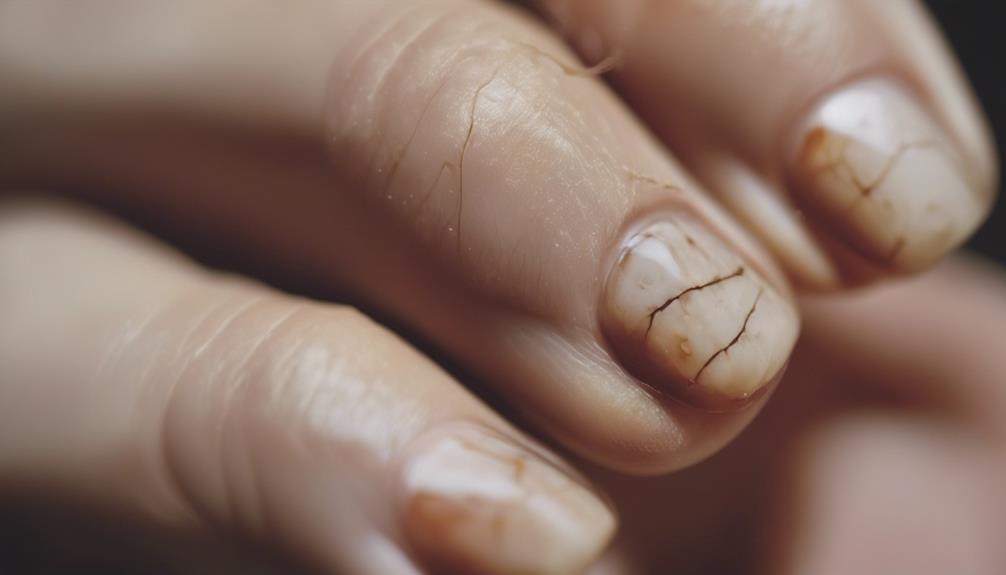
Dip nails have been associated with potential health risks that individuals should be aware of before opting for this nail enhancement technique. Allergic reactions and skin irritation are among the immediate concerns that some individuals may experience after getting dip nails. The chemicals used in the process, such as cyanoacrylate, can trigger allergies in sensitive individuals, leading to redness, itching, or swelling around the nails. Moreover, the repeated application and removal of dip powders can cause skin irritation, especially if proper precautions are not taken during the process.
In addition to these immediate concerns, there are long-term effects and safety concerns associated with dip nails. Prolonged and frequent use of dip nails may weaken the natural nail bed, making the nails brittle and prone to breakage. The use of strong chemicals and the filing involved in the application process can also damage the nail plate over time. Therefore, individuals should weigh the aesthetic benefits of dip nails against the potential health risks before deciding to opt for this nail enhancement technique.
Hygiene Concerns
Maintaining proper cleanliness and sanitation practices during the application and removal of nail enhancements is paramount in ensuring the overall hygiene of the nail salon environment. Sanitary practices are vital to prevent the spread of infections and diseases. When dip nails are applied or removed, there is a risk of bacterial growth if tools and surfaces are not adequately sanitized between clients. Bacteria can thrive in moist environments, potentially leading to fungal infections or other health issues if proper hygiene protocols are not followed.
To mitigate these risks, nail technicians should regularly disinfect tools, wash their hands thoroughly, and use clean towels for each client. Implementing strict hygiene protocols not only protects the clients but also safeguards the reputation of the salon. Additionally, clients can contribute to maintaining a hygienic environment by ensuring that they only visit reputable salons that prioritize cleanliness. By adhering to stringent sanitary practices, both nail technicians and clients can enjoy beautiful nail enhancements without compromising their health.
Chemical Exposure

Chemical exposure through dip nails raises concerns due to the potential dangers of the substances used in the process.
Health risks are involved because certain chemicals can be harmful when absorbed through the skin or inhaled, leading to possible side effects that users should be aware of.
Dangers of Chemicals
Exposure to the various chemicals used in certain nail treatments has raised concerns regarding potential health risks associated with prolonged contact with these substances. When considering the dangers of chemicals in nail treatments, it is essential to be aware of:
- Toxicity Levels: Some chemicals used in nail treatments have high levels of toxicity, which can have adverse effects on overall health.
- Irritation and Sensitization: Prolonged exposure to these chemicals can lead to skin irritation and sensitization, causing discomfort and potential allergic reactions.
- Volatile Compounds: Certain chemicals used in nail treatments release volatile compounds into the air, which can be harmful when inhaled over extended periods of time.
Understanding these chemical exposure risks is crucial in assessing the potential health implications of using certain nail treatments.
Health Risks Involved
Given the potential health risks associated with prolonged contact with certain chemicals used in nail treatments, it is imperative to understand the implications of chemical exposure on overall well-being.
The risks involved in using dip nails primarily stem from the chemicals present in the products. Substances like ethyl methacrylate, formaldehyde, and toluene are common culprits that can lead to adverse health effects if not handled with proper care. These chemicals have been linked to respiratory issues, skin irritations, and even more severe conditions with prolonged exposure.
To mitigate these risks, it is crucial to follow proper care guidelines, such as ensuring adequate ventilation during application, using protective gloves, and being mindful of any signs of discomfort or allergic reactions. Prioritizing safety measures can significantly reduce the potential health risks associated with dip nails.
Potential Side Effects
Understanding the potential side effects of prolonged exposure to certain chemicals present in dip nails is crucial for maintaining overall well-being.
When it comes to chemical exposure from dip nails, it's essential to consider:
- Allergic reactions and skin irritation: Prolonged contact with certain chemicals in dip nails can lead to allergic reactions and skin irritation, causing discomfort and potential long-term skin damage.
- Long term effects on nail health: The continuous use of dip nails may weaken the nails over time, making them brittle and prone to breakage. This can impact the overall health and strength of your natural nails in the long run.
Nail Damage

Nail damage from dip nails can result from prolonged use without proper maintenance and care. While dip nails are known for their durability and long-lasting color, improper application or neglecting aftercare can lead to issues such as weakened nails, peeling, or even fungal infections. To prevent nail damage when using dip nails, consider the following prevention tips:
- Ensure the nail technician is experienced in applying dip powder.
- Opt for high-quality products.
- Avoid excessive filing of the natural nail.
- Give your nails breaks between applications to prevent overexposure to chemicals.
In the event that nail damage occurs, there are treatment options available. For minor issues like peeling or thinning, moisturizing the nails and cuticles regularly can help restore strength. In cases of more severe damage or infection, seeking professional advice from a dermatologist or nail specialist is recommended. Remember, proper care and attention are essential to enjoy the benefits of dip nails without compromising the health of your natural nails.
Removal Process
Efficiently removing dip nails requires careful steps to minimize damage to the natural nails and surrounding skin. When considering the removal process, there are various techniques and aftercare tips to keep in mind:
- DIY Removal: Many individuals opt for at-home removal of dip nails. This method involves using acetone-soaked cotton balls wrapped around the nails to break down the layers of the dip powder gradually.
- Professional Removal: Visiting a salon for professional removal is another common choice. Nail technicians have specialized tools and techniques to safely remove dip nails without causing harm to the natural nails.
- Aftercare Tips: After removing dip nails, it is essential to moisturize the nails and cuticles regularly to promote healthy nail growth. Additionally, taking breaks between manicures can help the nails recover and strengthen.
Whether choosing DIY removal or opting for professional assistance, following proper removal techniques and aftercare tips is crucial in maintaining the health and appearance of your nails.
Expert Recommendations
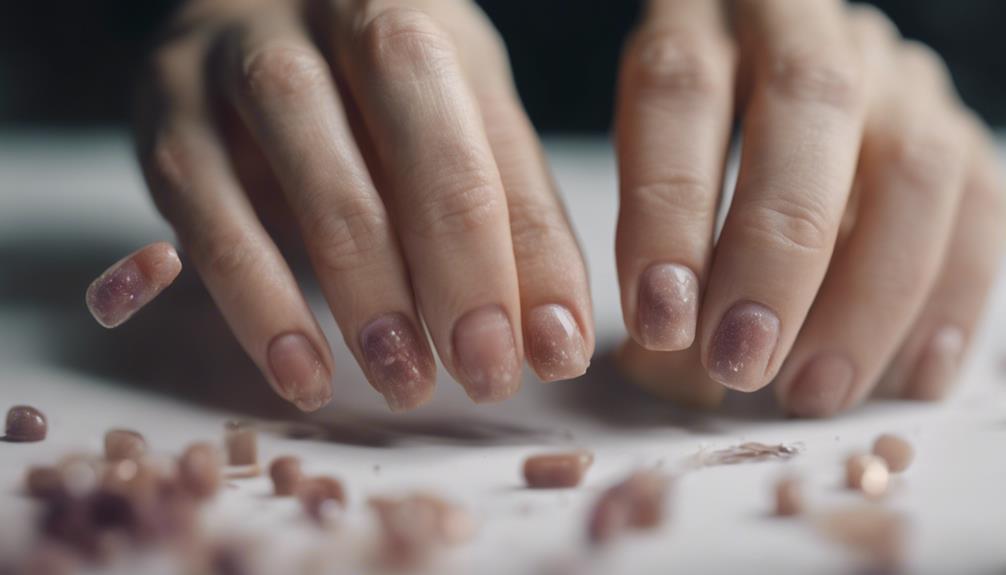
When it comes to dip nails, understanding the health risks involved is crucial. Expert recommendations often emphasize the importance of using proper removal methods to prevent damage to the nails.
Additionally, exploring alternative nail treatments can be beneficial for those looking to maintain healthy nails in the long run.
Health Risks Involved
An in-depth analysis of the potential health risks associated with dip nails as evaluated by experts in the field reveals crucial insights for consumers to consider.
While dip nails offer a durable and long-lasting manicure option, it's essential to be aware of the following health risks:
- Skin irritation: Some individuals may experience skin irritation due to the chemicals present in dip nail products.
- Allergic reactions: Allergic reactions to the components of dip nail products can occur, leading to discomfort and potential health issues.
- Nail damage: Improper application or removal of dip nails can result in nail damage, weakening the natural nails over time.
Consumers should prioritize their health and well-being by staying informed about these potential risks and taking necessary precautions.
Proper Removal Methods
Proper removal of dip nails is essential to minimize the risk of nail damage and maintain the health of your nails, according to recommendations from experts in the field. Gentle removal techniques are crucial to prevent weakening or thinning of the natural nail bed. Experts advise using safe methods such as soaking the nails in acetone or using nail wraps to dissolve the dip powder gently. Avoiding harsh scraping or filing is paramount to protect the nail's integrity.
Additionally, moisturizing the nails and cuticles post-removal can help restore hydration and strength. By following these safe techniques, individuals can ensure a smoother transition between dip nail applications and reduce the likelihood of nail-related issues.
Alternatives to Consider
Consider exploring alternative nail enhancement options that align with your nail health goals, as recommended by experts in the industry. Here are some innovative alternatives to dip nails:
- Natural Nails: Embrace the beauty of your natural nails by keeping them healthy and well-maintained with nourishing treatments and regular manicures.
- DIY Options: Experiment with DIY nail enhancements using quality products and tutorials to create unique and personalized designs at home.
- Gel Manicures: Opt for gel manicures that provide long-lasting color and shine without the potential risks associated with dip powder systems.
Frequently Asked Questions
Can Dip Nails Cause Allergic Reactions?
Nail sensitivities can manifest due to chemical exposure from dip nails. Individuals with sensitivities may experience allergic reactions. It is imperative to consider the potential risks associated with chemical exposure when opting for dip nails.
Are Dip Nails Safe for Pregnant Women?
In the realm of nail care, pregnant women may have concerns about the safety of dip nails. Ensuring the products used are pregnancy-friendly and opting for well-ventilated salons can help mitigate potential risks.
How Long Does It Take for Dip Nails to Dry Completely?
Nail care and maintenance are crucial factors in ensuring dip nails dry completely. DIY tips and tricks like using a high-quality dip powder system, applying thin layers, and utilizing a quick-setting activator can expedite the drying process for flawless results.
Can Dip Nails Be Applied Over Natural Nails Without Causing Damage?
Innovative nail application techniques can enhance nail health when dip nails are expertly applied over natural nails. Proper maintenance and a gentle removal process are crucial for preserving nail health and ensuring a seamless transition between applications.
Are There Any Long-Term Effects of Regularly Getting Dip Nails?
Regularly getting dip nails may lead to health concerns like weakening of natural nails, dehydration, and allergic reactions. To mitigate risks, opt for reputable salons, ensure proper nail maintenance, and take breaks between treatments.
Conclusion
In conclusion, dip nails pose potential health risks, hygiene concerns, chemical exposure, and nail damage, especially during the removal process. Experts recommend staying informed about the ingredients in dip nail products and seeking professional application and removal services to minimize risks.
Interestingly, a study found that prolonged exposure to the chemicals in dip nail products can lead to respiratory issues in some individuals, highlighting the importance of caution when using these products.

